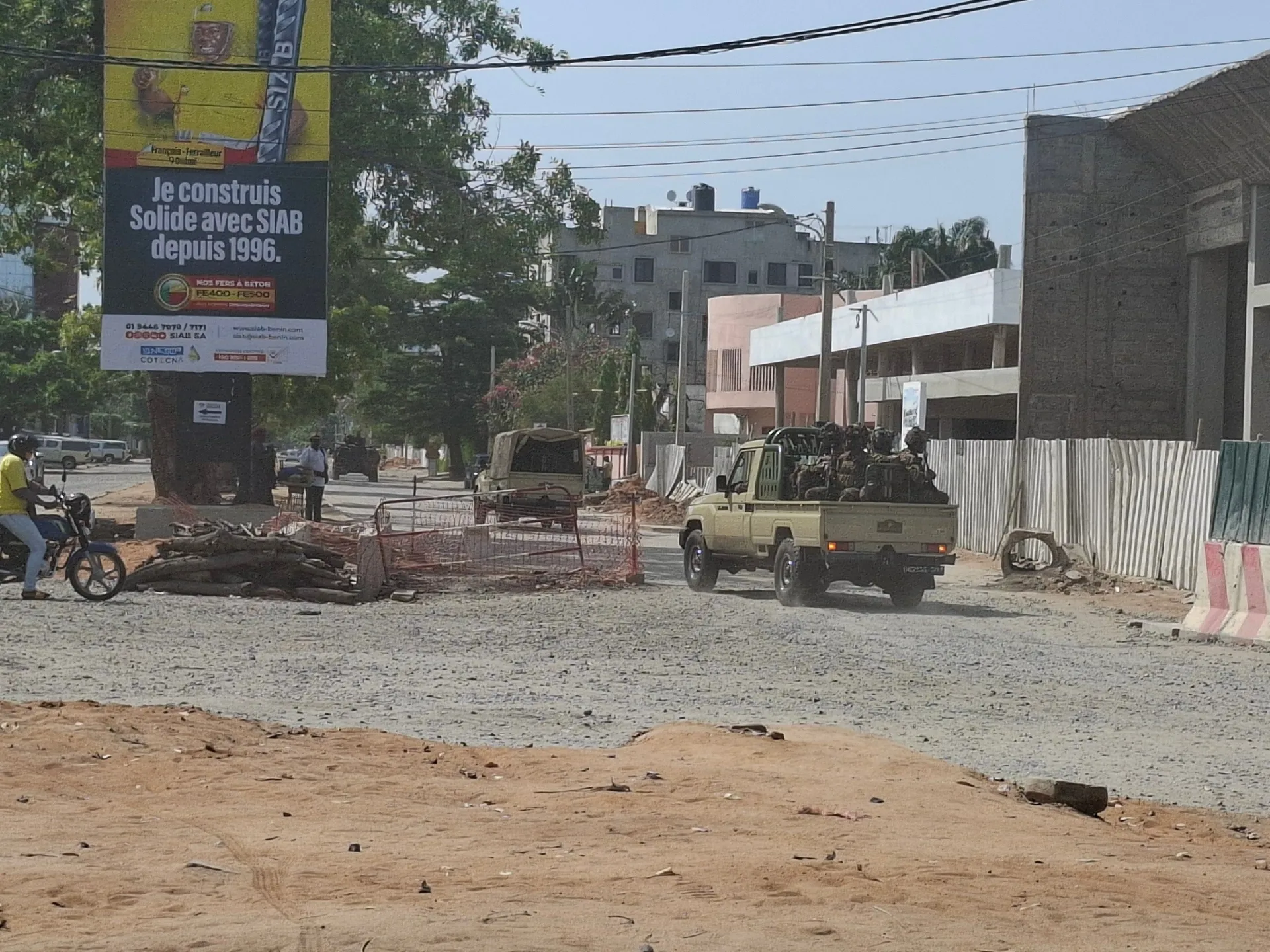Nigeria says it deployed troops to Benin to ‘dislodge coup plotters’ | Conflict News
Nigerian President Bola Tinubu has confirmed deploying fighter jets and ground troops to neighbouring Benin to help foil a coup attempt by a group of Beninese soldiers.
In a statement on Sunday, Tinubu’s office said Nigeria’s military intervened in Benin after President Patrice Talon’s government issued two requests for help, including for “immediate Nigerian air support”.
Recommended Stories
list of 4 itemsend of list
Tinubu first ordered Nigerian fighter jets to enter Benin and “take over the airspace to help dislodge the coup plotters from the National TV and a military camp where they had regrouped”, the statement said.
Nigeria’s military sent in ground troops later, after Benin’s government asked for their support in “the protection of constitutional institutions and the containment of armed groups”, it said.
Tinubu praised his troops and said they had helped “stabilise a neighbouring country”.
The Nigerian statement came shortly after Talon, the president of Benin, appeared on national television and said his security forces had successfully blocked the attempt to overthrow his government.
Talon promises punishment
Talon said forces loyal to him “stood firm, recaptured our positions, and cleared the last pockets of resistance held by the mutineers”.
“This commitment and mobilisation enabled us to defeat these adventurers and to prevent the worst for our country,” he said. “This treachery will not go unpunished.”
The Benin president added that his thoughts were with the victims of the coup attempt as well as with a number of people who have been held by the fleeing mutineers.
He did not give details.
The unrest was the latest threat to democratic governance in the region, where militaries have in recent years seized power in Benin’s neighbours Niger and Burkina Faso, as well as in Mali, Guinea and, only last month, Guinea-Bissau. But it was an unexpected development in Benin, where the last successful coup took place in 1972.
A government spokesperson, Wilfried Leandre Houngbedji, said that 14 people had been arrested in connection with the coup attempt as of Sunday afternoon, without providing details.
One security source told the AFP news agency that all the detainees were soldiers in active service, except one who was ex-military. It was not clear if Lieutenant Colonel Pascal Tigri, the coup leader, had been apprehended.
Minister of Foreign Affairs Olushegun Adjadi Bakari told the Reuters news agency that the soldiers had only managed to briefly take control of the state TV network.
While gunfire had been heard in some locations of the country’s commercial hub, Cotonou, during the coup attempt, the city has been relatively calm since early afternoon, according to residents.
ECOWAS to send troops
The Economic Community of West African States (ECOWAS) regional bloc and the African Union also condemned the coup attempt.
In a statement later on Sunday, ECOWAS said it had ordered the immediate deployment of elements of its standby force to Benin, including troops from Nigeria, Sierra Leone, the Ivory Coast and Ghana.
It said the troops would help the Beninese government and army “preserve constitutional order and the territorial integrity of the Republic of Benin”.
The coup attempt came as Benin prepares for a presidential election in April, which is expected to mark the end of Talon’s tenure.
Last month, Benin adopted a new constitution, creating a Senate and extending the presidential mandate from five to seven years. Critics have described the reforms as a power grab by the governing coalition, which has chosen Minister of Economy and Finance Romuald Wadagni as its candidate.
The opposition Democrats party, founded by Talon’s predecessor, Thomas Boni Yayi, has meanwhile seen its proposed candidate rejected because of what a court ruled was insufficient backing from lawmakers.
Ibrahim Yahaya Ibrahim, deputy director of the Sahel Project at the International Crisis Group, told Al Jazeera that the coup bids in Benin and other African countries have been partly driven by governments rejecting their democratic responsibilities.
“In recent days and recent months, we have all been holding our breath about what could happen in many countries that are either facing security situations that are bad, or are coming to an election, where there is no clarity on whether the rulers will be respecting the rules of the democratic game,” Yahaya said.
“That is a good part of the story [in Benin]. President Talon has accepted to step down in a context where many other leaders are trying to add new terms. We saw it in Cote d’Ivoire, we saw it in Cameroon recently, and many other cases. But the less positive part of the story is that the leader of the opposition’s candidacy has been invalidated in Benin,” he added.


